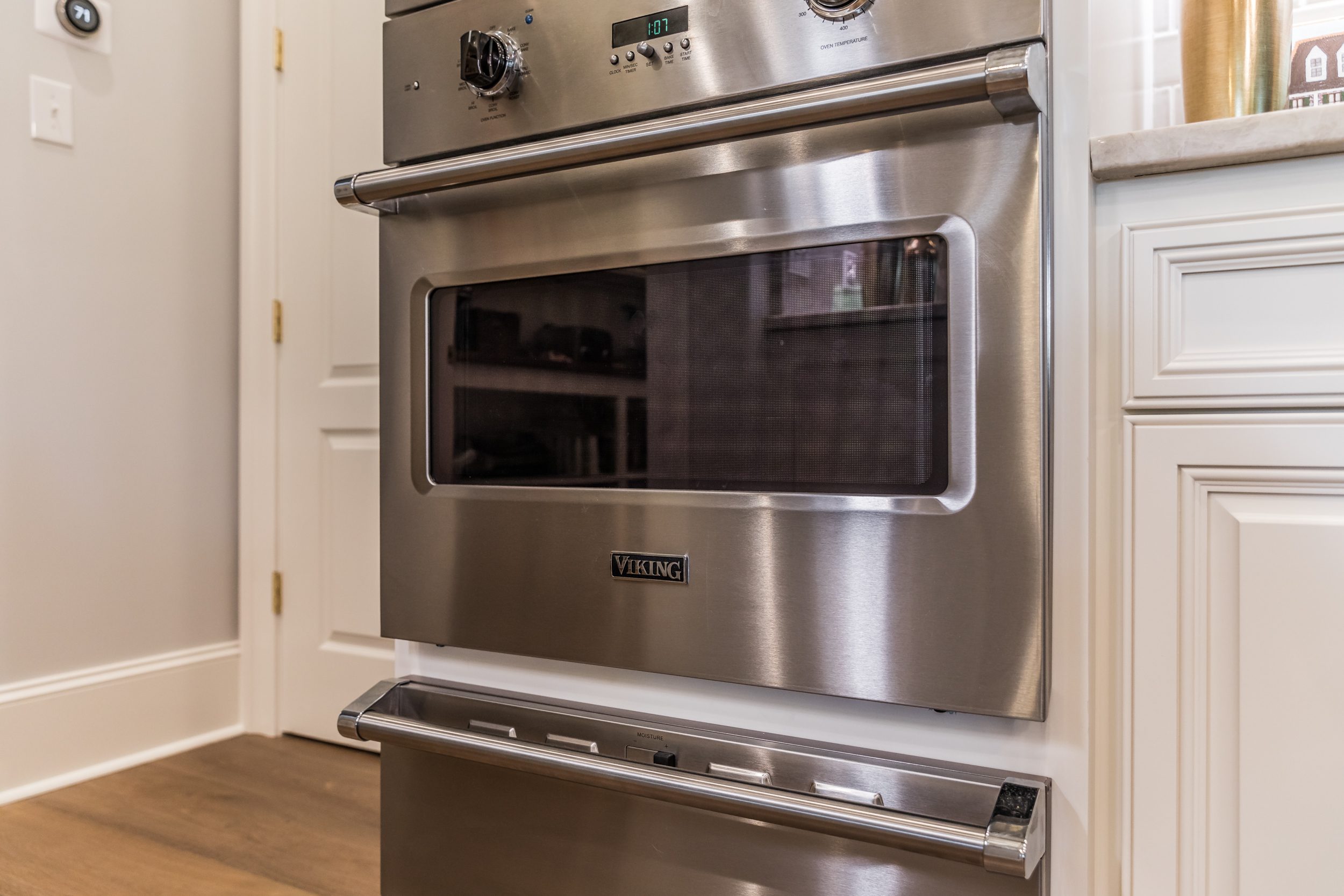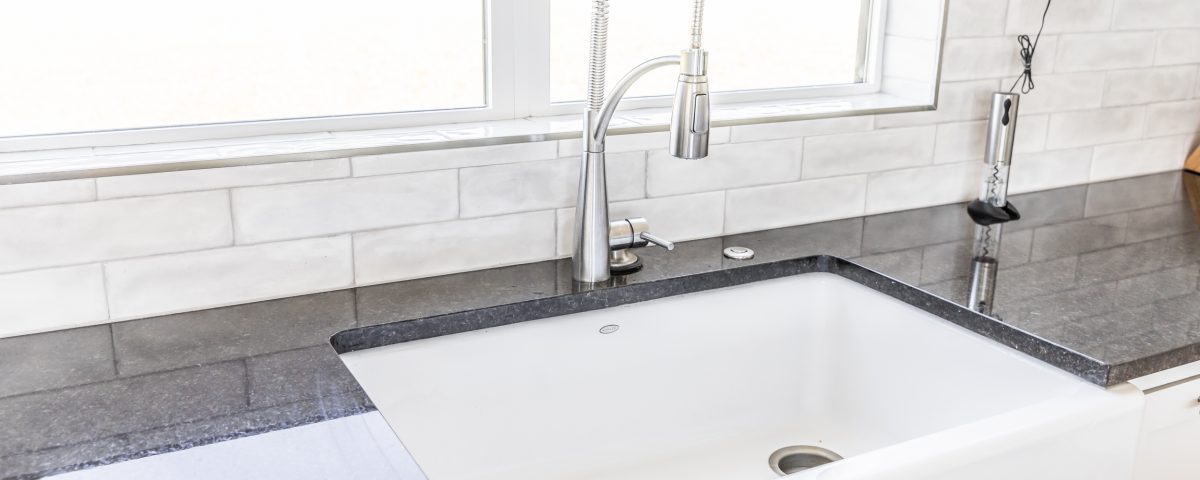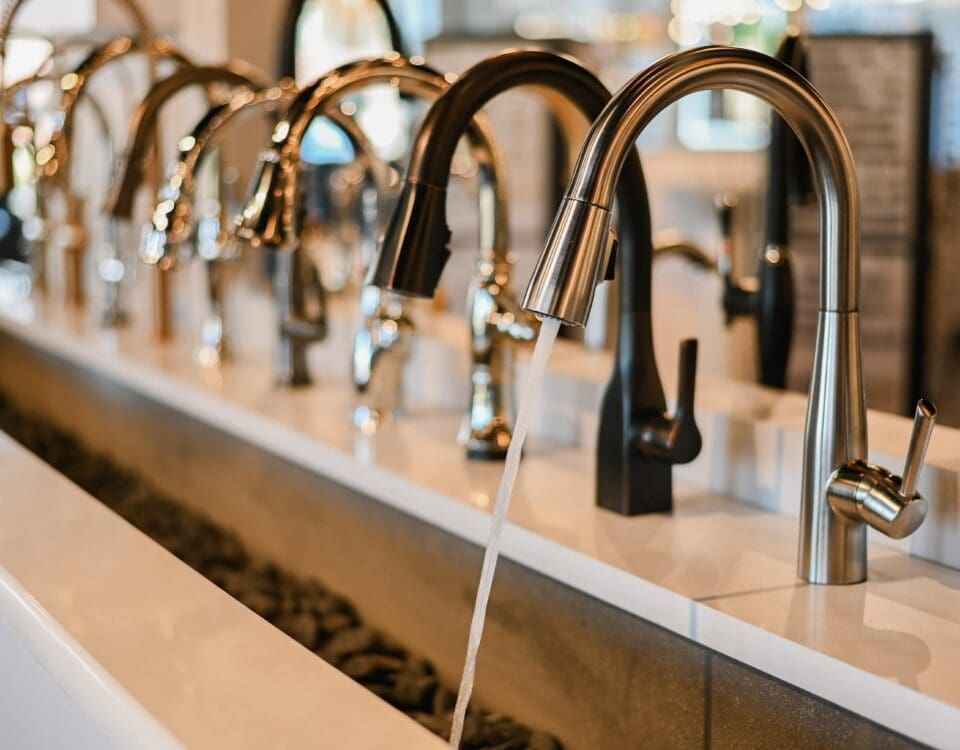
How to Protect Your Appliances from Severe Weather
August 24, 2022
All You Need to Know about Warming Drawers
September 22, 2022We’ve all experienced it, the dreaded dirty kitchen faucet. Whether it be water spots, soap scum, mold, mildew, or lime, it can be difficult to clean (and keep clean) a faucet.
Below you’ll find all the information you need to know about maintaining a kitchen faucet, from tips and tricks to the importance of keeping it clean.
Why should I keep my faucet head clean?
Water spots can make a sink faucet look unsightly, although these spots are relatively harmless. But faucets can be breeding grounds for mold and mildew, which can become dangerous. It is recommended to clean your faucets around every other month, not just for looks but to maintain consistent water pressure and flow.
Cleaning a faucet with vinegar
To clean a faucet with vinegar, all you need is white vinegar and a plastic bag. Pour a few cups of vinegar into a plastic bag. Then seal the plastic bag with a rubber band. The vinegar helps break up the calcium and mineral deposits on the faucet.
Let the faucet sit submerged in the vinegar overnight. In the morning, remove the bag, take a toothbrush and dip it in baking soda to remove any excess filth. Finally, rinse the faucet.
Cleaning a faucet with baking soda
Creating a vinegar and baking soda concoction can also clean your faucet. Mix a 2:1 ratio of baking soda to white vinegar in a plastic bag and allow the mixture to fizz. Then submerge the faucet in the mixture and tie off the bag with a rubber band. Let the faucet soak for around 30 minutes.
Then create a thick paste of baking soda and dish soap, dip a toothbrush in the concoction and use it to remove the loosened calcium and limescale. Finally, rinse the faucet with water.
Cleaning a faucet with a lemon
Lemons are naturally acidic and can be used as an all-natural cleaner. Here’s what to do. Take a lemon and cut it in half, then create an indent in the center of the lemon for the faucet to go.
Twist the faucet into the lemon wedge to release the juices, then place a bag over the faucet and lemon and secure it with a rubber band. Let it sit overnight. In the morning, dip a toothbrush in baking soda and scrub the faucet before rinsing.
Cleaning a faucet with limescale remover
Sometimes vinegar, baking soda, and lemon might not be strong enough to clean a faucet affected by hard water. If this is the case, you’ll want to purchase a limescale remover. If you use this kind of cleaner, make sure you use gloves when applying. Getting chemicals on your skin can be dangerous.
Once you have the remover fill up a plastic bag with the recommended amount of cleaner. Seal up the bag and let the faucet soak for about 5 to 10 minutes. Finally, take off the bag and use a toothbrush to clean the remaining gunk.
How to remove the faucet head
Sometimes cleaning the faucet requires a little more effort. You might need to remove the faucet’s aerator end and clean it out from the inside. If you need to remove your faucet, here’s how:
- Take a hand towel or a washcloth and place it on the end of the faucet. This helps with minimizing the chance of scratching.
- Using a pair of pliers, loosen the end of the faucet, then remove the rest with your hands. After it’s removed, rinse out as much of the inside as you can.
- Then soak the end of the faucet in white vinegar for about an hour.
- Once the faucet has been soaked, use baking soda and a toothbrush to scrub any remaining gunk out.
- Then replace the faucet.
See also: Which Kitchen Faucet Should You Choose?
If you’re looking for a wholesale distributor of plumbing fixtures, light fixtures, home appliances & cabinet hardware in Lafayette, LA look no further than Facets of Lafayette. Serving Louisiana as the largest wholesale distributor of its kind, we are the place to go for all aspects of your home building or remodeling needs.
Sources:
https://www.apartmenttherapy.com/how-to-clean-a-faucet-spray-head-with-vinegar-260944
https://cleaning.lovetoknow.com/house-cleaning-tips/how-clean-faucet-head-easy-ways-remove-buildup



